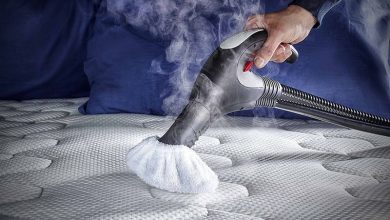KEEP YOUR OFFICE CLEAN FOR BETTER WORK ENVIRONMENT

It’s no surprise that air quality in an office can often be poor. With so many people in such a small space, dirt, dust, and other debris can really build up quickly – not to mention the added influence of any office renovations or new building construction nearby.
Poor office air quality can lead to Sick Building Syndrome, which affects employees anytime they’re inside. If workers complain about headaches, respiratory problems, coughing, or fevers while on the job, it could very well be due to an indoor air quality issue – especially if these symptoms only occur at work and clear up by the time people get home.
Indoor air in an office is a lot worse than outdoor air. Many health symptoms experienced by workers are caused by indoor air pollution, which is precisely why it’s essential to keep the air inside your commercial building clean and safe. This not only promotes comfort among your employees but also protects their health.
WHAT IS INDOOR AIR QUALITY (IAQ)?
Indoor air quality describes how the air inside a building or facility affects a person’s health, comfort, and ability to work. It’s a major concern to businesses, employees, and rental managers because indoor air can have a huge impact on the well-being and productivity of employees.
Several studies by the U.S. Environmental Protection Agency (EPA) regarded indoor air pollution as a major problem. While most commercial buildings don’t have severe issues, even the most well-maintained buildings can have episodes of poor indoor air.
According to the EPA, poor indoor air quality can lead to productivity problems and increased absences among employees. It is estimated that all these health consequences cost the government billions of dollars each year due to medical care and productivity loss.
WHAT CAUSES POOR INDOOR AIR QUALITY?
Indoor air pollution is perhaps one of the most underrated health concerns in commercial and institutional buildings. And it isn’t hard to see why. Outdoor air, when heavily polluted, can be easily noticed (dark smoke, toxic smell, and bitter taste). But indoor air is different. It hides behind the cool and comforting air blown by the AC and the calming smell of air fresheners. And because people don’t see it, it’s easy to dismiss the fact that it exists.
SO WHAT MAKES OFFICE INDOOR AIR POLLUTED?
There are hundreds of air pollutants commonly found in homes and commercial facilities. Among the most common (and harmful) are tobacco smoke, dust, mold and mildew, chemical pollutants, and VOCs.
CIGARETTE SMOKE
Even if you or your employees do not smoke inside the building, cigarette smoke can linger on the smoker’s skin and clothes. That’s why when a smoker enters the office, you could smell it right away. Cigarette smoke contains more than 4000 chemical compounds, most of which are highly toxic and detrimental to the respiratory system.
DUST
Dust and other environmental pollutants such as mites contribute to indoor air pollution. Without sufficient ventilation, these tiny pollutants can easily circulate around your office, triggering allergy symptoms in some people.
MOLD AND MILDEW
When the temperature outside drops and the indoor air is heated, condensation can form around windows, causing moisture. High moisture content in indoor air provides the perfect environment for mold and mildew to thrive. Furthermore, if you have water damage issues in the office, there’s a very high chance that mold and mildew are present too.
CHEMICAL POLLUTANTS
Building materials, office equipment; furniture, wall and floor coverings, upholstery, and virtually every commercially manufactured item in your workplace emit chemical pollutants. They include polybrominated biphenyl (PBB), polychlorinated biphenyl (PCB), polyurethane, formaldehyde, and VOCs.
HOW DO YOU DETECT POSSIBLE INDOOR AIR QUALITY ISSUES IN THE OFFICE?
It can be difficult to determine the causes of indoor air pollution, especially in commercial facilities. Often, facility managers will only notice it when people start experiencing symptoms triggered by IAQ.
The approaches taken to detect possible indoor air quality issues vary among organizations, but they normally include the following steps:
- Inspection of the ventilation system to see if a sufficient amount of outdoor air is taken in and properly distributed throughout the area and if the filtration systems are working.
- Ruling out possible triggers of symptoms such as thermal comfort, noise, ergonomics, poor lighting, etc.
- Testing for the presence of air pollutants (mold, asbestos, carbon monoxide, other chemicals, and toxic gases). This can be done using air testing kits. Samples are then submitted to the lab for analysis.
HOW DO YOU IMPROVE YOUR OFFICE INDOOR AIR QUALITY?
Luckily, there are ways to improve air quality and keep employees happy and healthy in any office environment. At the very least, try the following ideas from ServiceMaster Clean Contract Services to lower the chances of your staff getting sick and to improve office air quality overall:
KEEP YOUR WORKPLACE CLEAN
A clean workplace has lower levels of mold, dust, allergens, and contaminants that could spread through the air. Consider using eco-friendly cleaning products that do not release harsh chemical compounds into the air.
USE AIR-CLEANING DEVICES
Having commercial-grade equipment in your disposition, such as air scrubbers, dehumidifiers, and air purifiers are a great way to keep your IAQ at good levels and prevent the need to hire professionals.
CHANGE HVAC FILTERS REGULARLY
HVAC systems should be cleaned regularly. Be sure to change the filters from time to time to prevent dust and other air pollutants from circulating back into your indoor air. Clogged filters can interrupt airflow and speed up the build-up of pollutants in enclosed spaces.
OBSERVE PROPER VENTILATION
Whenever possible, turn off your HVAC system and open the windows to allow outdoor air to enter the building. Be sure to keep air vents unblocked. Placing furniture, storage boxes, chairs, or cabinets in front of air vents will disrupt air circulation, causing your workplace to feel stuffy. Indoor plants are also a great addition to your office. They are not only refreshing to the eyes but can also help promote your indoor air quality by absorbing carbon dioxide and releasing oxygen into the air.
CONDUCT REGULAR AIR TESTS IN THE OFFICE
Performing indoor air testing will provide you with the right information and insights to make your IAQ improvement plan more directed and efficient. Air quality tests include checking humidity levels, airflow, ventilation, mold growth, odors, and water damage.
KEEP YOUR AIR VENTS OPEN AND UNBLOCKED
If furniture, boxes, or other items block the path of your air vents, the air inside your office won’t circulate properly and could cause health issues.
REPLACE AIR FILTERS FREQUENTLY.
If your air filters are clogged, airflow becomes nonexistent. Over time, dust and debris will build up behind the filters and settle inside your air ducts, putting your employees’ health at even more risk. As a general rule, air filters should be replaced every 6-12 months.
MAINTAIN A HEALTHY LEVEL OF HUMIDITY.
Humidity between 30 and 50 percent helps keep dust mites, mold, and other allergens under control. Use dehumidifiers and air conditioners to control the humidity level in your office.
CLEAN SPILLS IMMEDIATELY.
Excess moisture or residual dampness supports the growth of mildew and mold, which can cause severe health risks. It’s more expensive to remediate mold damage than it is to prevent it, so it’s in your best interest to reduce the risk of mold growth by cleaning up spills or leaks as soon as you see them.
ADD SOME OFFICE PLANTS.
Not only do plants add a pleasing, peaceful aesthetic to any office, but they also absorb toxins and produce more oxygen, which means employees will be able to breathe more easily.
USE FRESH AIR WHENEVER POSSIBLE.
If your office has windows, open them up and let that fresh air in. When weather permits, keeping your windows and doors open helps circulate fresh air in and stale air out.
USE A COMMERCIAL AIR PURIFIER IN YOUR OFFICE
Use a commercial or industrial air purifier depending on your needs. An air purifier from a good company like Euromate Pure Air can help you get a cleaner work environment and reduce the chances of bacteria/ virus spread.
KEEP YOUR OFFICE CLEAN.
Regularly vacuum, dust, sanitize, clear away clutter and promptly dispose of all rubbish as it accumulates. Often, it’s easiest to schedule regular professional cleanings to ensure this crucial component of indoor air quality doesn’t get overlooked. Keeping clean ensures fewer pollutants have a chance to mix with the air and make your employees sick. You can also get a medical air purifier Australia.
INSPECT AND CLEAN YOUR AIR DUCTS.
If there are any signs that your air ducts are impacting air quality or circulation and need to be cleaned, call in experts to assess and correct the issue before anyone’s health is compromised.
HAVE YOUR OFFICE AIR QUALITY TESTED
Experts in air quality have the right tools and know-how to measure air quality in offices, from the airflow to humidity levels, ventilation, odors, leaks, standing water, water damage, mold growth, and more. After a thorough inspection, you’ll know exactly what needs to be fixed to improve office air quality moving forward. Test your air quality with a co2 monitor.
CONCLUSION
Indoor air quality should be one of the most important concerns in your workplace as it directly affects the overall health and wellbeing of your staff and employees. Poor IAQ can increase the risk of many health problems, from respiratory illnesses to infections. It can even compromise your mental health.
You have two options to improve your indoor air quality. You can either hire professionals or do everything by yourself. Which one you will choose is up to you.
Know that there are things you can do to promote the IAQ in your workplace. These include keeping your place clean, maintaining your HVAC system, changing filters regularly, and conducting regular air tests.





